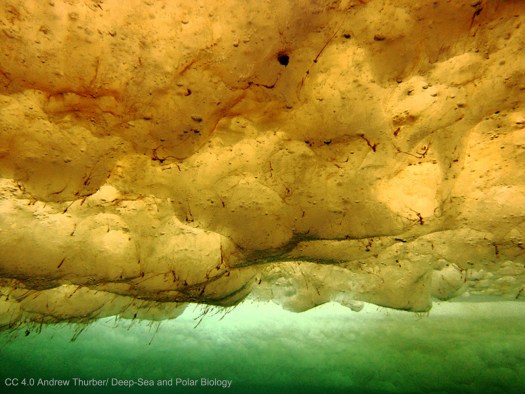
They are microscopic plants. You may never see them individually, but they exist by the millions on or near the surface of oceans, lakes, and rivers, even in polar regions. Scientists call them phytoplankton which comes from two Greek words that mean “plant drifter.” We call them oxygen generators.
You can see masses of green phytoplankton on the water surface because of the green chlorophyll they contain. Chlorophyll enables them to use sunlight and nutrients from the water to produce the nourishment they need to live. In the process of photosynthesis, they are oxygen generators. Of course, humans and all animals must have the oxygen to breathe, and phytoplankton play an essential role in our climate by controlling the balance between oxygen and carbon dioxide in the atmosphere.
In the ocean, tiny animals called krill eat phytoplankton. In turn, the krill provide the diet for many fish and even for huge baleen whales. Those whales stir up the ocean, bringing to the surface minerals which the phytoplankton need. As whales eat and grow, they take in large amounts of carbon. When they die, their bodies containing the carbon sink to the bottom of the ocean. This well-engineered system helps prevent the build-up of greenhouse gases in the atmosphere.
Phytoplankton are incredibly diverse, with thousands of different species. The microscopic photo shows members of one class of phytoplankton known as diatoms. The carcasses of phytoplankton, algae, and other marine plants deposited on the sea beds long ago became the petroleum we use today.
Diatoms produce silicon shells, and when they die, those shells form deep deposits on the ocean floor. People mine those microscopic shells and use them for what we call diatomite or diatomaceous earth used in industry for fine polishing and for filtering liquids. In addition, gardeners sprinkle diatomaceous earth around their plants to protect them from insect pests. Scientists are also exploring uses for those microscopic shells in nanotechnology.
So, in addition to being oxygen generators, these tiny plants produce energy sources for humans and food for creatures of the ocean and freshwater lakes. Without them, our climate would be much different, and life would be difficult, if not impossible. Chance evolution doesn’t seem to be an adequate explanation for diverse phytoplankton. We see them as another example of design by the Master Designer of life.
— Roland Earnst © 2021


